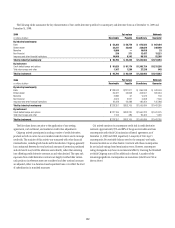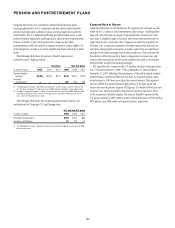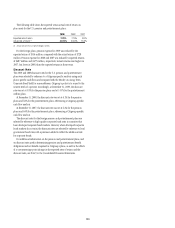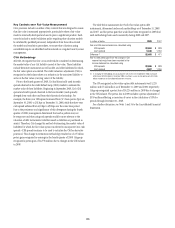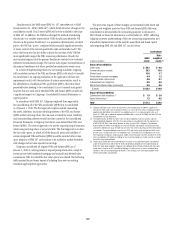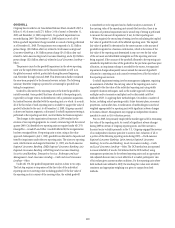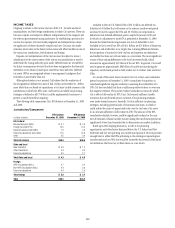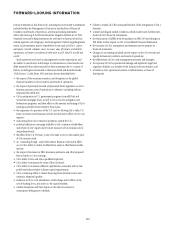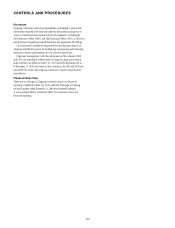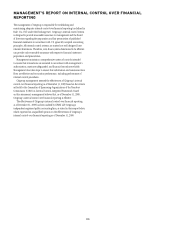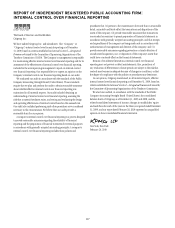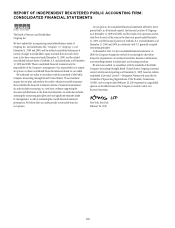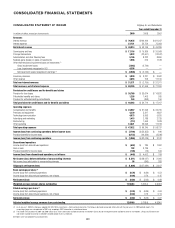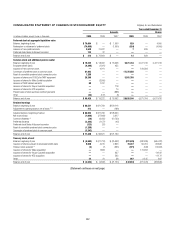Citibank 2009 Annual Report Download - page 122
Download and view the complete annual report
Please find page 122 of the 2009 Citibank annual report below. You can navigate through the pages in the report by either clicking on the pages listed below, or by using the keyword search tool below to find specific information within the annual report.
112
INCOME TAXES
Citigroup is subject to the income tax laws of the U.S., its states and local
municipalities, and the foreign jurisdictions in which Citi operates. These tax
laws are complex and subject to different interpretations by the taxpayer and
the relevant governmental taxing authorities. In establishing a provision for
income tax expense, Citi must make judgments and interpretations about
the application of these inherently complex tax laws. Citi must also make
estimates about when in the future certain items will affect taxable income in
the various tax jurisdictions, both domestic and foreign.
Disputes over interpretations of the tax laws may be subject to review /
adjudication by the court systems of the various tax jurisdictions or may be
settled with the taxing authority upon audit. Deferred taxes are recorded for
the future consequences of events that have been recognized in the financial
statements or tax returns, based upon enacted tax laws and rates. Deferred
tax assets (DTAs) are recognized subject to management’s judgment that
realization is more likely than not.
Although realization is not assured, Citi believes that the realization of
the recognized net deferred tax asset of $46.1 billion at December 31, 2009 is
more likely than not based on expectations as to future taxable income in the
jurisdictions in which the DTAs arise, and based on available tax planning
strategies as defined in ASC 740 that could be implemented if necessary to
prevent a carryforward from expiring.
The following table summarizes Citi’s DTA balance at December 31, 2009
and 2008:
Jurisdiction/Component
In billions of dollars
DTA balance
December 31, 2009
DTA balance
December 31, 2008
U.S. Federal
Net operating loss (NOL) $ 5.1 $ 4.6
Foreign tax credit (FTC) 12.0 10.5
General business credit (GBC) 1.2 0.6
Future tax deductions and credits 17.5 19.9
Other 0.5 0.9
Total U.S. federal $36.3 $36.5
State and local
New York NOLs $ 0.9 $ 1.2
Other State NOLs 0.4 0.4
Future tax deductions 3.0 2.7
Total State and local $ 4.3 $ 4.3
Foreign
APB 23 subsidiary NOLs 0.7 0.2
Non-APB 23 subsidiary NOLs 0.4 0.9
Future tax deductions 4.4 2.6
Total foreign $ 5.5 $ 3.7
Total $46.1 $44.5
Included in the net U.S. federal DTA of $36.3 billion are deferred tax
liabilities of $5 billion that will reverse in the relevant carryforward period
and may be used to support the DTA and $0.5 billion in compensation
deductions that reduced additional paid-in capital in January 2010 and
for which no adjustment to such DTA is permitted at December 31, 2009,
because the related stock compensation was not yet deductible to Citi.
Included in Citi’s overall net DTA of $46.1 billion are $25 billion of future tax
deductions and credits that arose largely due to timing differences between
the recognition of income for GAAP and tax and represent net deductions
and credits that have not yet been taken on a tax return. The most significant
source of these timing differences is the loan loss reserve build, which
accounts for approximately $15 billion of the net DTA. In general, Citi would
need to generate approximately $86 billion of taxable income during the
respective carryforward periods to fully realize its U.S. federal, state and local
DTAs.
As a result of the recent losses incurred, Citi is in a three-year cumulative
pretax loss position at December 31, 2009. A cumulative loss position is
considered significant negative evidence in assessing the realizability of a
DTA. Citi has concluded that there is sufficient positive evidence to overcome
this negative evidence. The positive evidence includes two means by which
Citi is able to fully realize its DTA. First, Citi forecasts sufficient taxable
income in the carryforward period, exclusive of tax planning strategies,
even under stressed scenarios. Secondly, Citi has sufficient tax planning
strategies, including potential sales of businesses and assets, in which it
could realize the excess of appreciated value over the tax basis of its assets,
in an amount sufficient to fully realize its DTA. The amount of the DTA
considered realizable, however, could be significantly reduced in the near
term if estimates of future taxable income during the carryforward period are
significantly lower than forecasted due to deterioration in market conditions.
Based upon the foregoing discussion, as well as tax planning
opportunities and other factors discussed below, the U.S. federal and New
York State and City net operating loss carryforward period of 20 years provides
enough time to utilize the DTAs pertaining to the existing net operating loss
carryforwards and any NOL that would be created by the reversal of the future
net deductions that have not yet been taken on a tax return.


